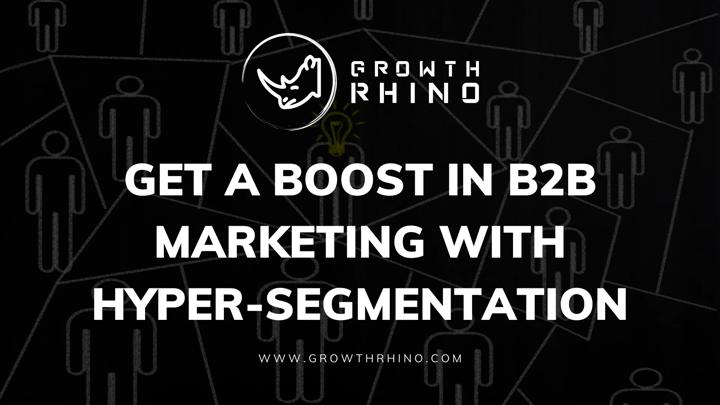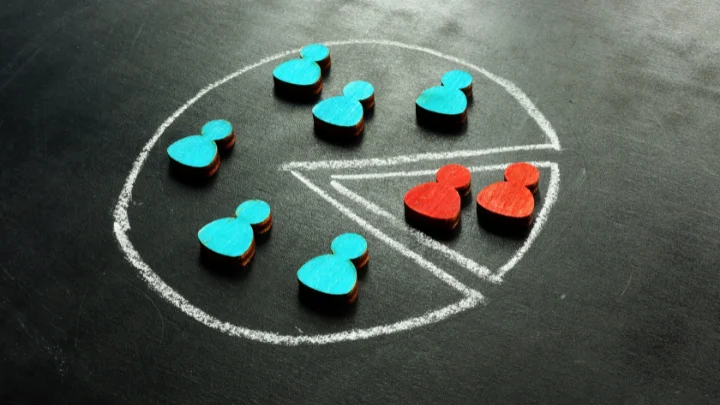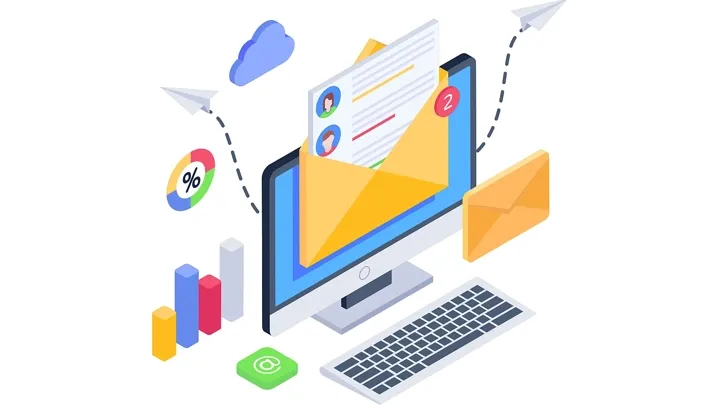
What is hypersegmentation marketing, and how can it help your B2B business? Along with this question, we also cover hyper-personalization in this post.
That is because hyper-personalization and hyper-segmentation work together in achieving a tailored experience for customers. That is, to optimize your hyper-segmentation strategies, you also need to use hyper-personalization tactics in the process.
In other words, hyper-segmentation drives personalization to enhance customer experience. How do these two marketing concepts work together to drive profit and success to a B2B business?
What Is Hyper Segmentation in B2B Marketing?
B2B customer hyper-segmentation allows organizations to target potential customers who have a high propensity to buy. With real-time customization offerings, hyper-segmentation strategies deliver messages, invitations, and offers when the customer intends to take the desired action.
Hyper-segmentation has the power to:
- Enhance customer satisfaction
- Drive customer loyalty
- Increase revenue
That is because hyper- segmentation:
- Goes beyond traditional and micro-segmenting techniques
- Leverages AI and ML techniques
- Offers real-time personalized content
- Enhances customer experience at the individual level
To define it another way, hyper-segmentation is the process of segmenting a target audience at a highly granular level.

The process involves segmenting a target audience by:
- Demographic profile
- Business location
- Role/title
- Behavior demonstrated through the marketing funnel
The platforms for B2B hyper-segmentation and hyper marketing personalization include:
- Account-based marketing – The target audience is segmented by company names and individually referred to in the content.
- Funnel-based – Funnel-based segmentation focuses on the target’s static profile in relation to their position in the marketing funnel. Static profile refers to data, such as company name, region, challenges, language, etc.
- Vertical-based – It means generating variants of offers written to attract vertical. Different verticals use different expressions to refer to the same solution. That is the term they expect to see in the marketing content.
- Application-based – Marketing campaigns are built around specific pain points, attracting the people who care most about a particular issue.
Hyper-segmentation allows you to break down your target market into smaller chunks of customer listings based on common characteristics. Each list contains entries of people that share similar traits and needs, making it easier to reach many of them using the same marketing tactic.
Why Use Hyper-Segmentation?
Targeting the right market that is more likely to engage and purchase from you is critical to your business, and hyper-segmentation allows you to do it.
The benefits of this tactic include:
1) Ability to create messages that resonate–
Once you become familiar with who your audience is, you can create powerfully personalized messages for them.
2) Design effective marketing strategies –
Hyper-segmentation allows you to:
- Craft effective strategies that work for each target customer.
- Identify and offer applicable solutions.
- Determine the most effective means to connect with your target audience.
3) Inform product development –
Hyper market segmentation is a highly effective way to improve customer satisfaction and get stellar reviews in return. Through this strategy, you can:
- Create products that highly appeal to the needs of major market segments.
- Tailor ideal solutions based on their needs.
4) Reveals market areas to expand into –
Market segmentation identifies audience segments not yet reached by your marketing efforts.
With the massive amount of consumer info available, brands can augment market segmentation markers and supplement them with more data.
Hyper-segmentation allows granular augmentation in:
- Demographic data – age, gender, socio-economic status, ethnicity, employment, industry, etc.
- Behavioral data – brand interaction, spending habits, brand loyalty, buying patterns, etc.
- Psychographic data – lifestyle, priorities, personality traits, interests, values, and beliefs
- Geographic data – postal code, climate, rural or urban, postal code, etc.
Here are a couple of stats on hyper-segmentation:
- 77% of marketing ROI comes from segmented and targeted campaigns.
- Non-targeted campaigns are 50% lower in click-through rates than segmented campaigns.
It goes to say it is futile to create one email copy for ALL of your leads and potential customers. Instead, use hyper-segmentation in your email marketing to increase the likelihood that they will open your emails.
What Is Hyper Segmentation Email Marketing?
Hyper-segmentation email marketing starts from categorizing email subscribers into smaller segments based on set criteria. All hyper-personalization marketing techniques initiate from this step, including email marketing.

Hyper-personalization requires extra effort compared to traditional personalization. The traditional approach considers only basic information, such as customer name, age, location, and socioeconomic status.
On the other hand, hyper-personalization with email marketing adds browsing info, purchase history, and real-time behavioral data into the mix.
Hyper-personalized marketing email content:
Today, many email marketing platforms incorporate hyper-personalization tactics to deliver highly relevant and customized messages. The more relevant your message is, the more likely recipients will engage with it.
By offering relevant information your target audience wants to consume, you create a process favorable to marketing and selling your products. Relevant content is a big part of how you develop a strong relationship with your audience and subscribers.
An example:
Here’s an example of relevant, hyper-personalized email content. (Note: Bold words indicate hyper-personalization.)
Thanks for giving us a try!
Hi Peter. We truly appreciate you giving ContentCreator a trial run. We would like to let you know that you can still access our site using your registered username and password.
Our blog also offers regular tips and updates on content development, content marketing, industry news, and more.
Are you ready to upgrade your subscription? Upgrade and get access to our popular features, including:
- Marketing automation
- Lead generation
- Marketing analytics
We would like to hear from you again!
Best,
Larry Brown
Manager, contentcreator.com
How to send relevant email marketing content?
Remind yourself to:
- Send timely messages – The idea is to send content at the time your audience needs it the most. Send a birthday message too late, and your message will be ignored.
- Set up triggered emails – This allows you to send emails at vital stages in your customer’s journey. Send triggered emails when a subscriber does a certain action or hits a milestone in their buying journey.
Hyper Segmentation Strategies to Boost Your B2B Marketing:
Some of the best hyper-segmentation practices to consider in your B2B marketing include:
1) Gathering detailed customer data –
Do not rely on demographics alone. Instead, try to build up your customer info database by getting insights into click-throughs, behaviors displayed on previous visits, email opens, products purchased, and other interactions made with your brand.

Start with loyalty programs where customers provide information in return for the benefits of belonging.
2) Investing in advanced technology –
Add AI and ML technology into your existing stack to drive better customer engagement. It allows faster offer scaling, as you can generate multiple offer combinations customized to individual needs.
3) Fine-tuning your offers –
Hyper-segmentation does not end when you have already segmented your customer database. B2B personalization and segmentation is an ongoing process that takes into account updated data and recent actions taken.
Use advanced technology to monitor these changes and fine-tune your offers accordingly.
Conclusion:
Hyper-segmentation and hyper-personalization are must-do strategies to incorporate in marketing plans today and long into the future. By imposing a 1:1 approach with your customers, you can deliver a better customer experience and promote greater loyalty.
With a highly segmented customer database base, you will be able to pinpoint and compare marketing opportunities.
At the same time, you can determine how well your current offerings meet the requirements of your audience. Treat dissatisfied segments of your market as excellent expansion opportunities.
By understanding the behaviors and needs of your audience, your company can do a more excellent job crafting products and services for them and do a more effective job marketing to them.
